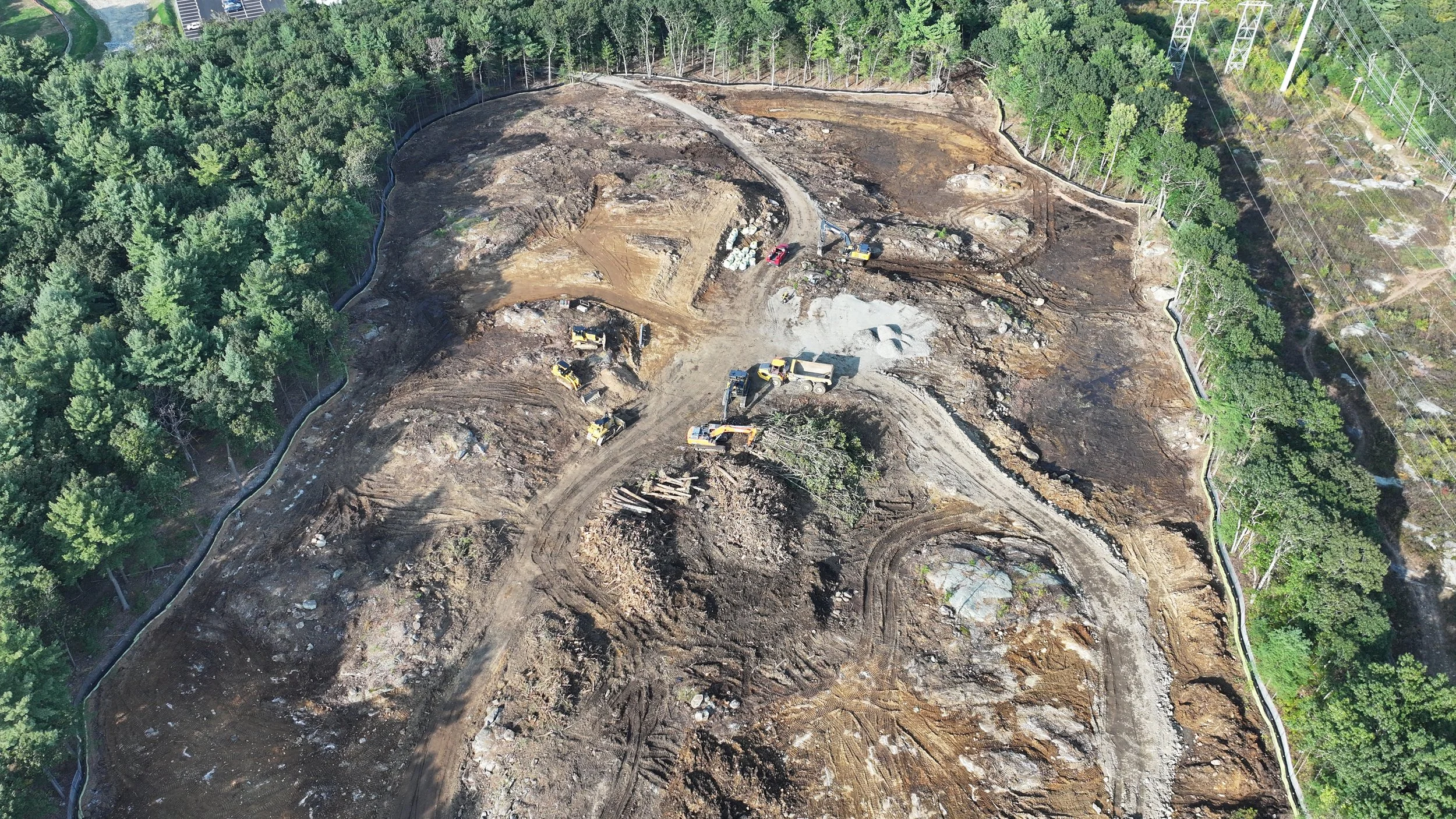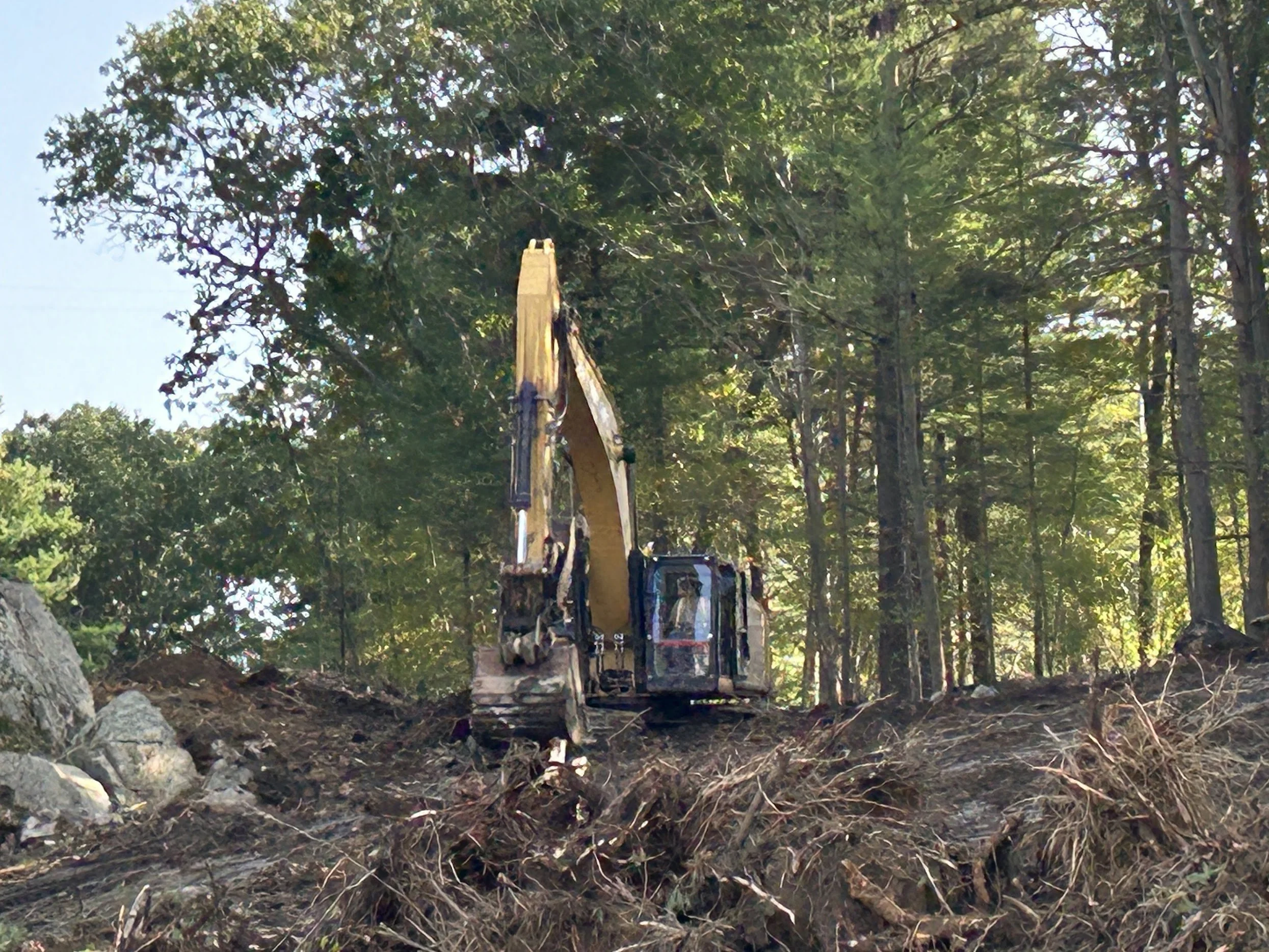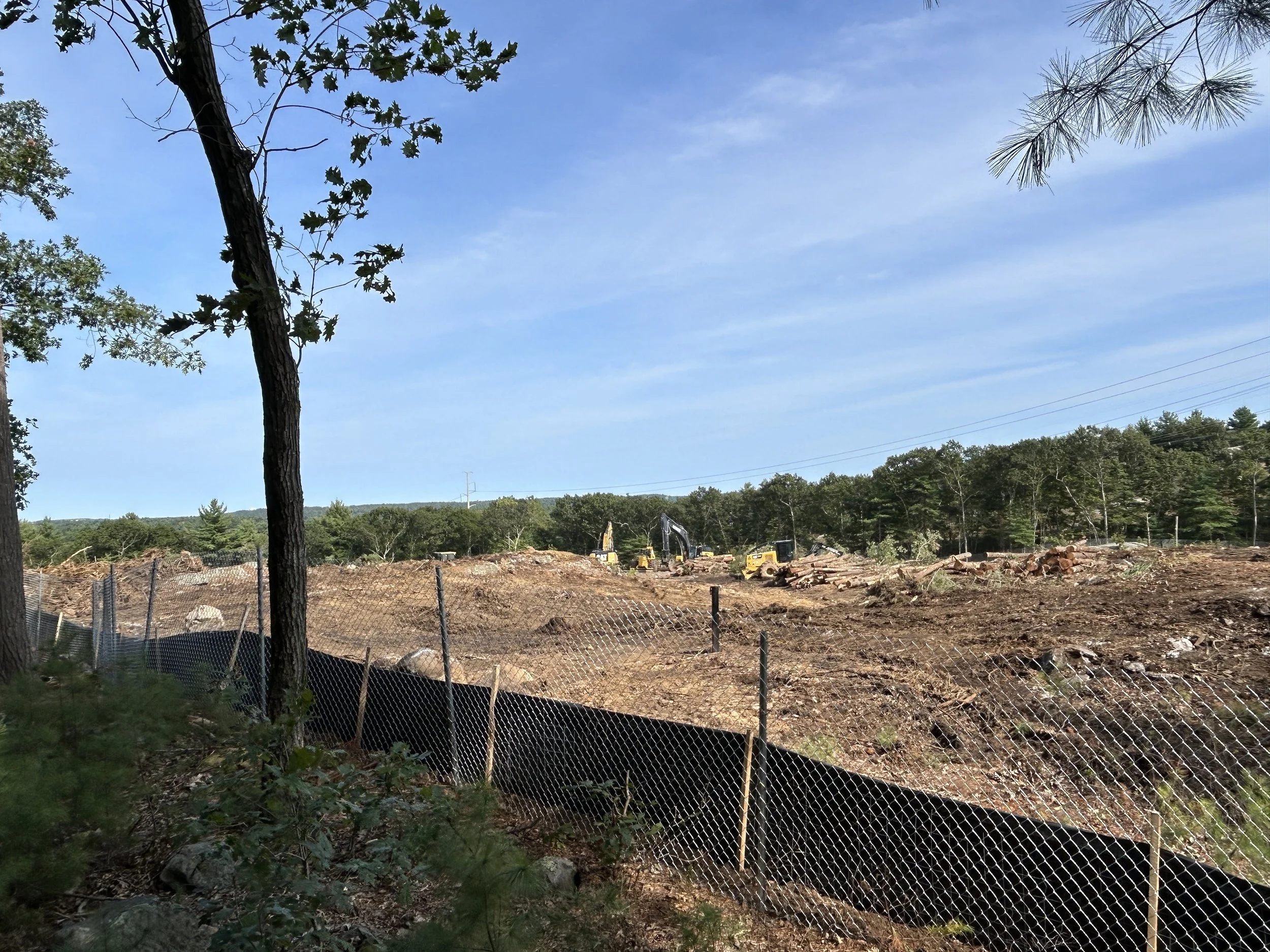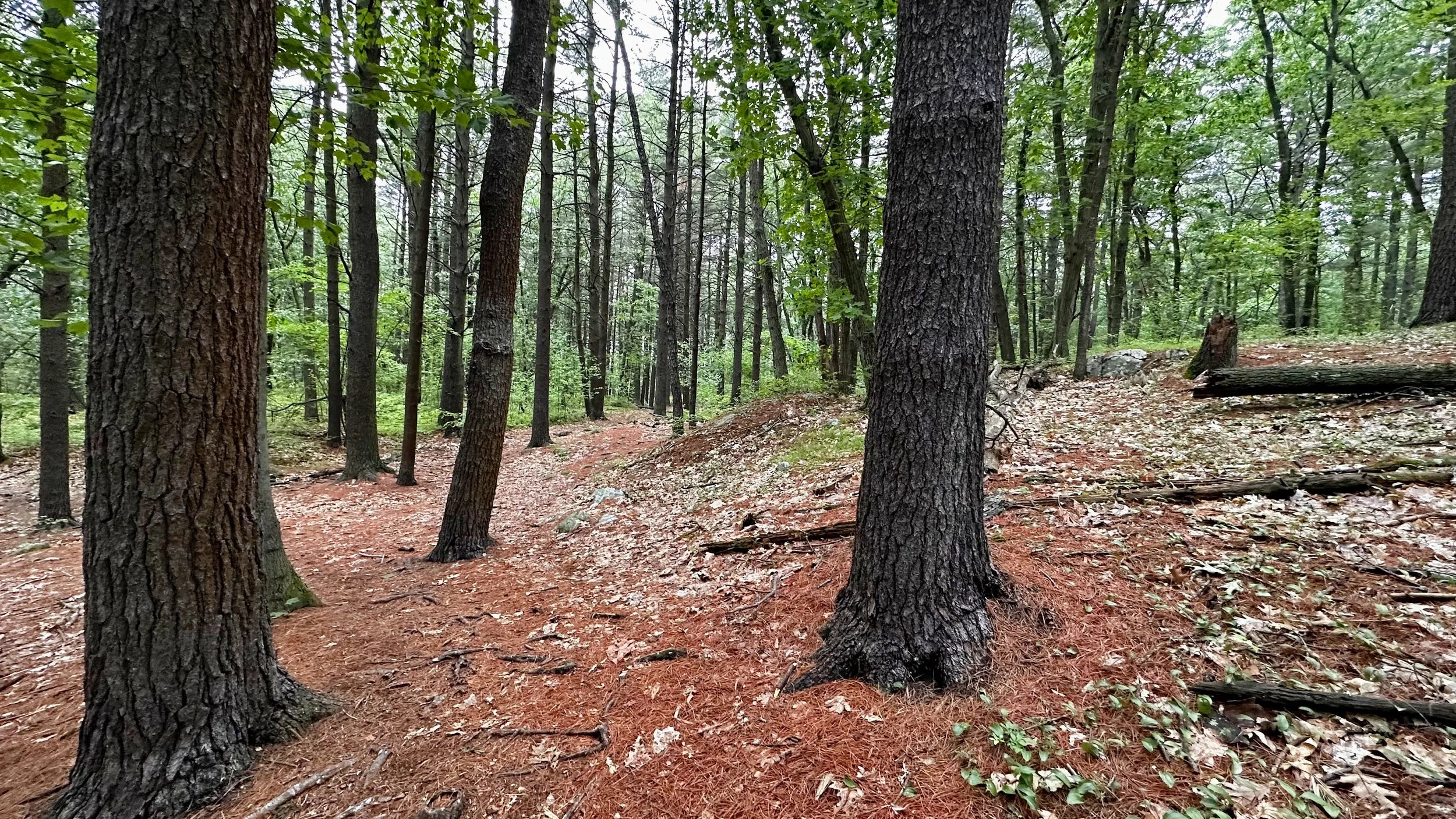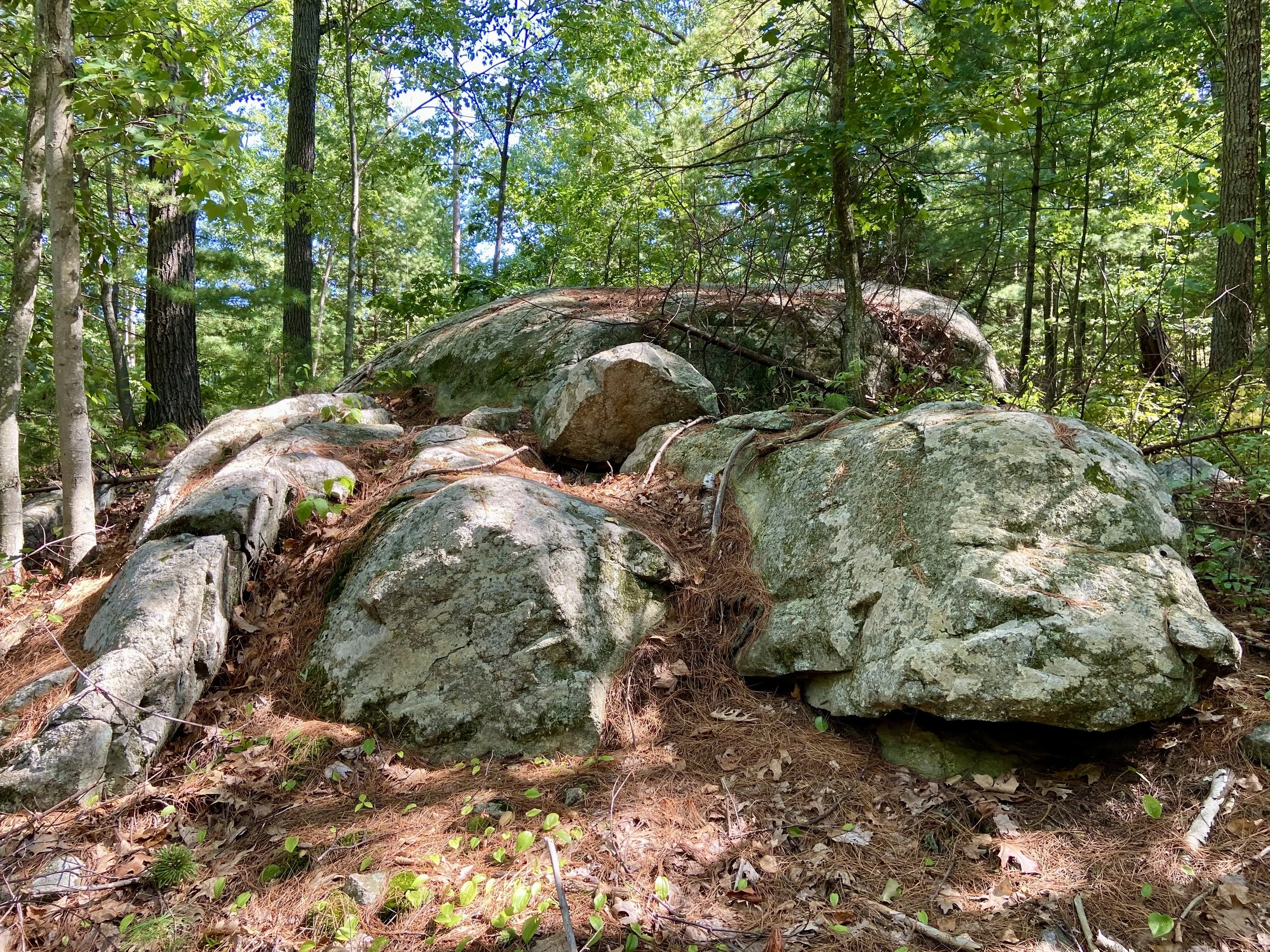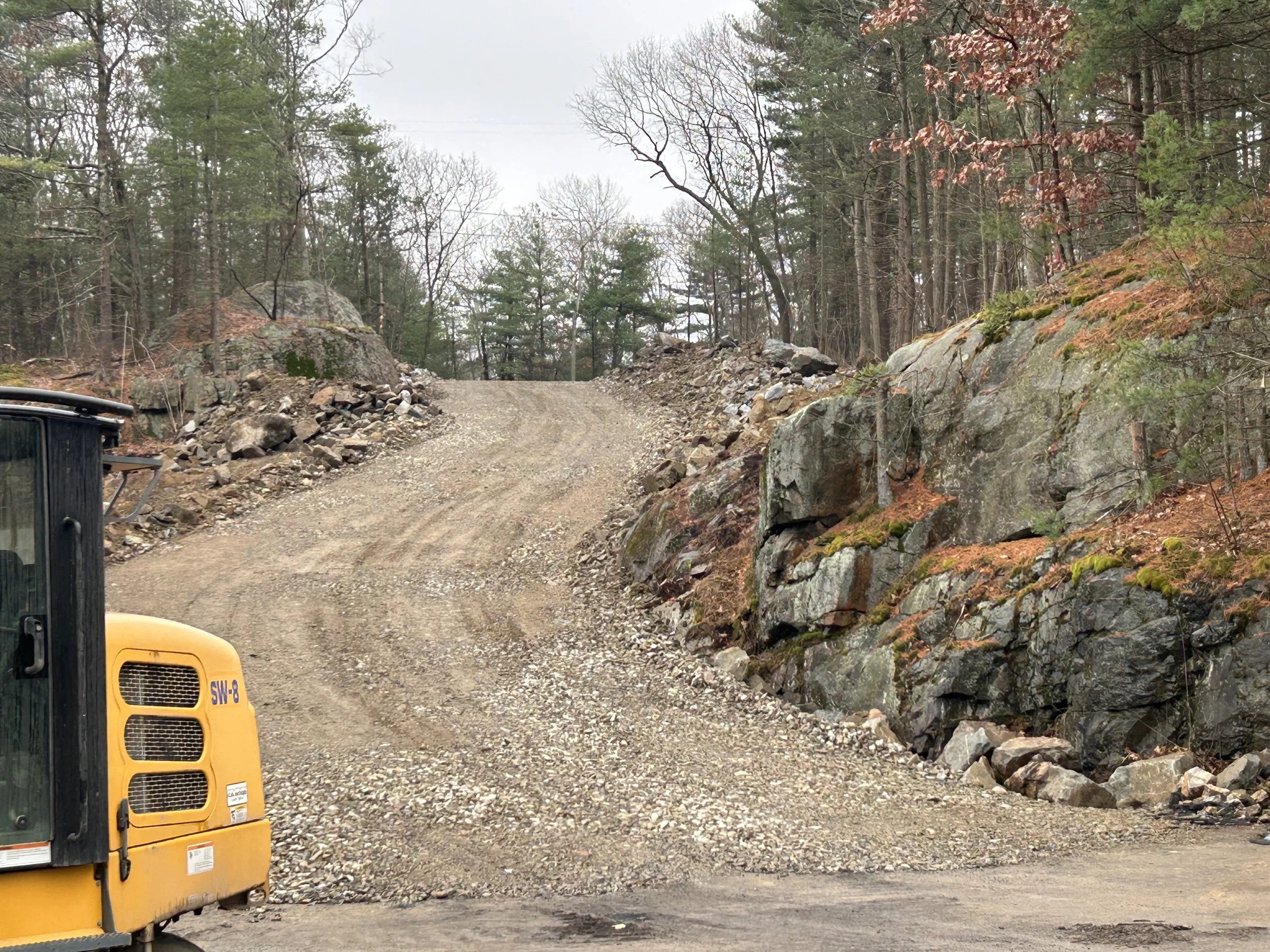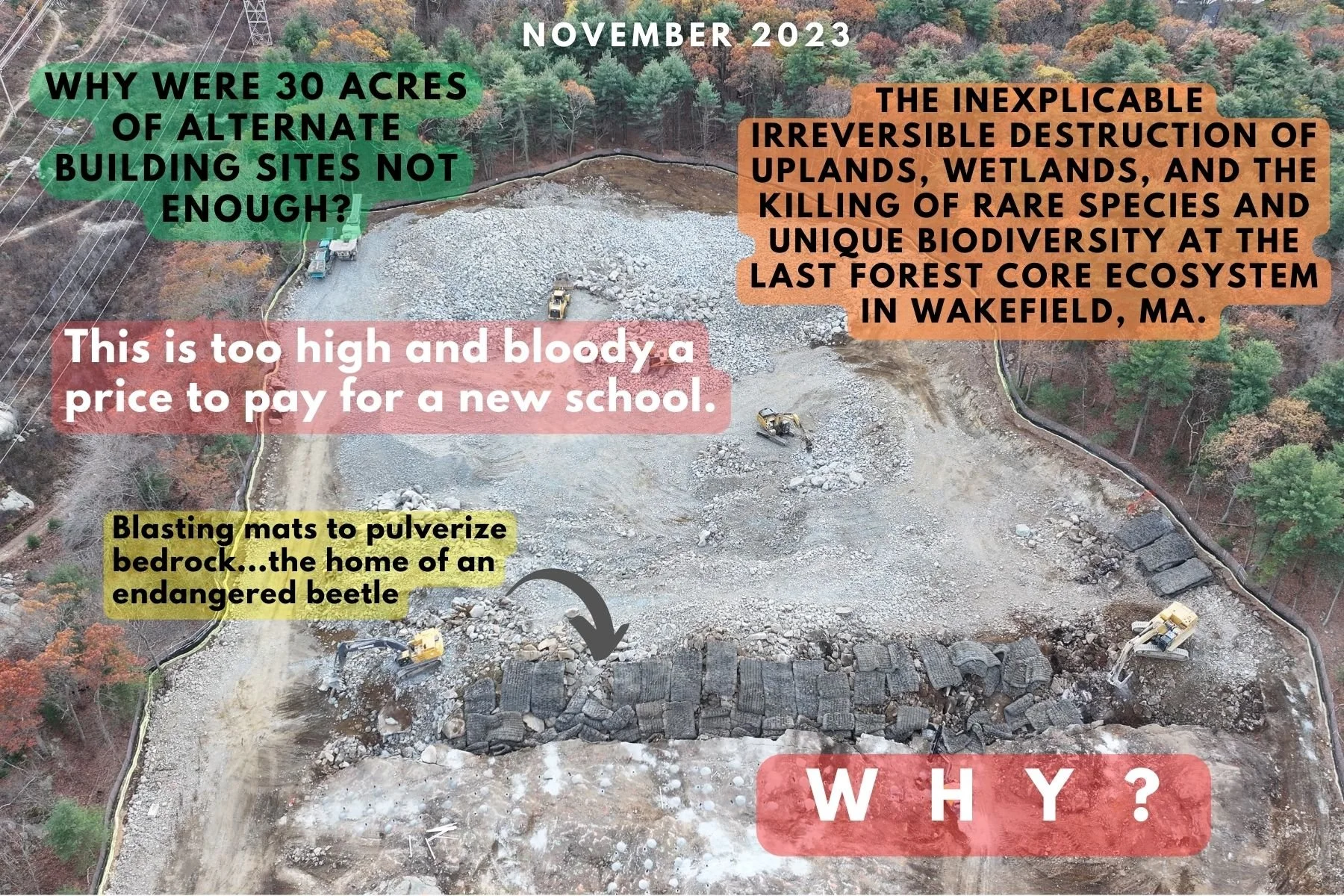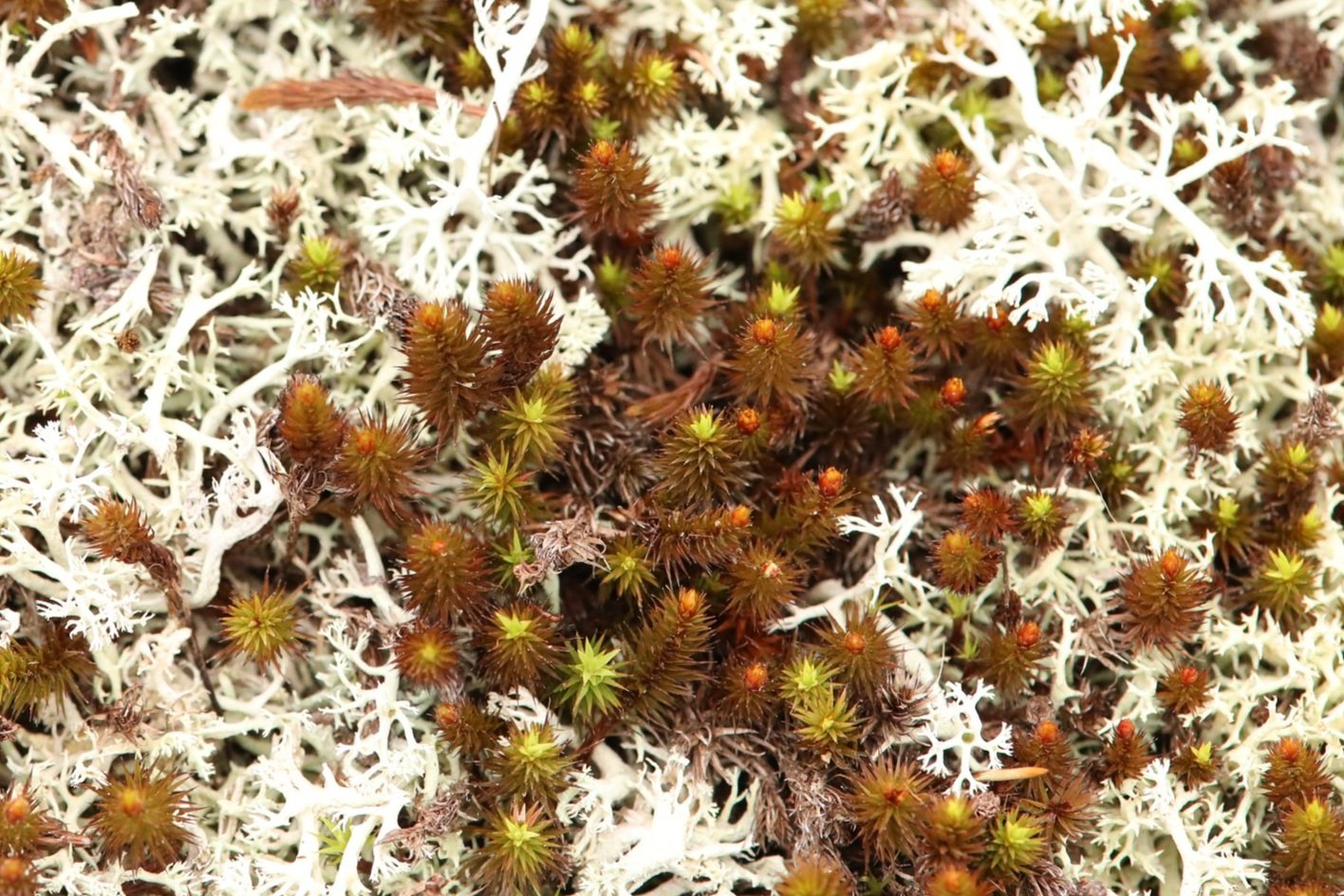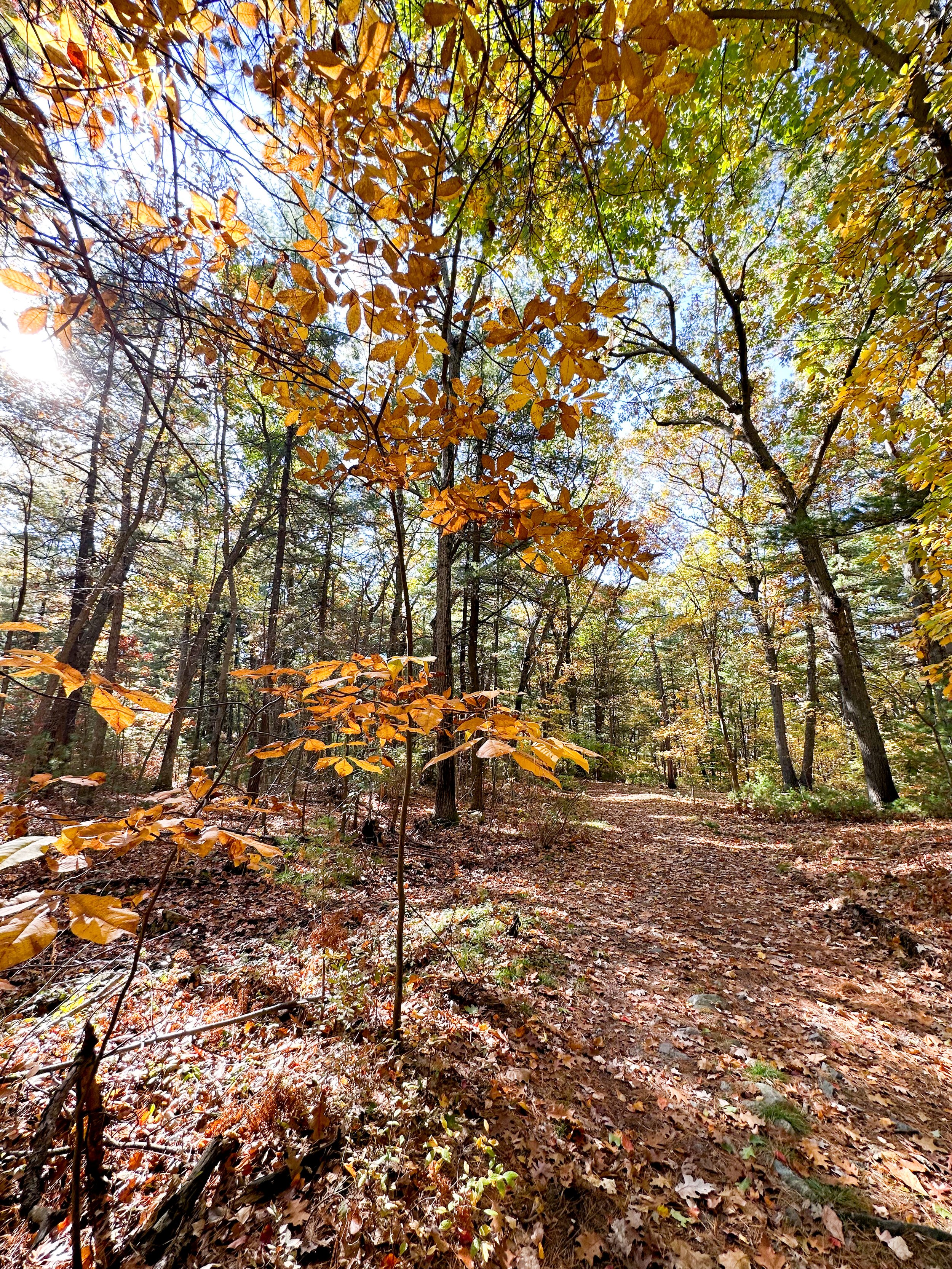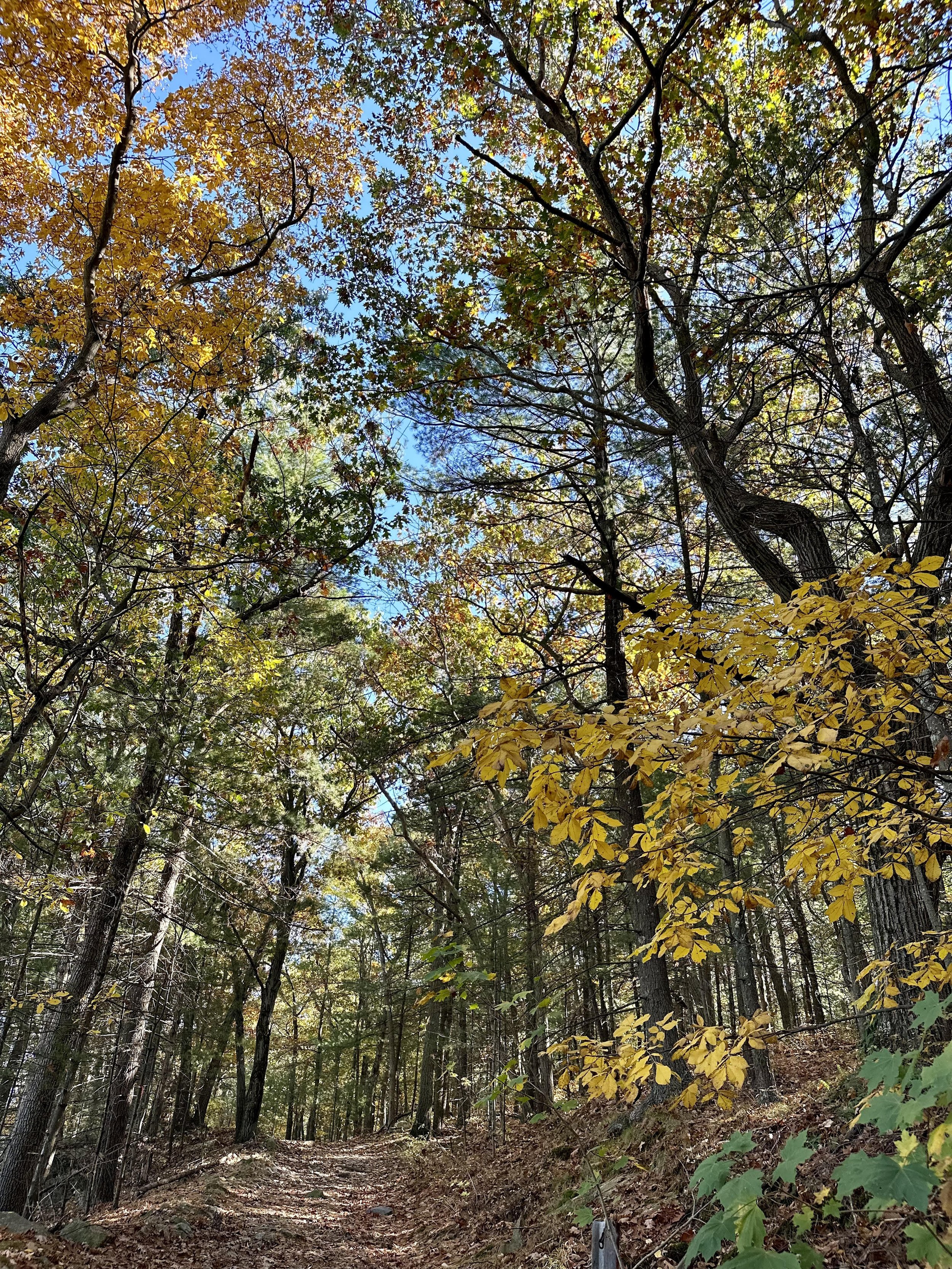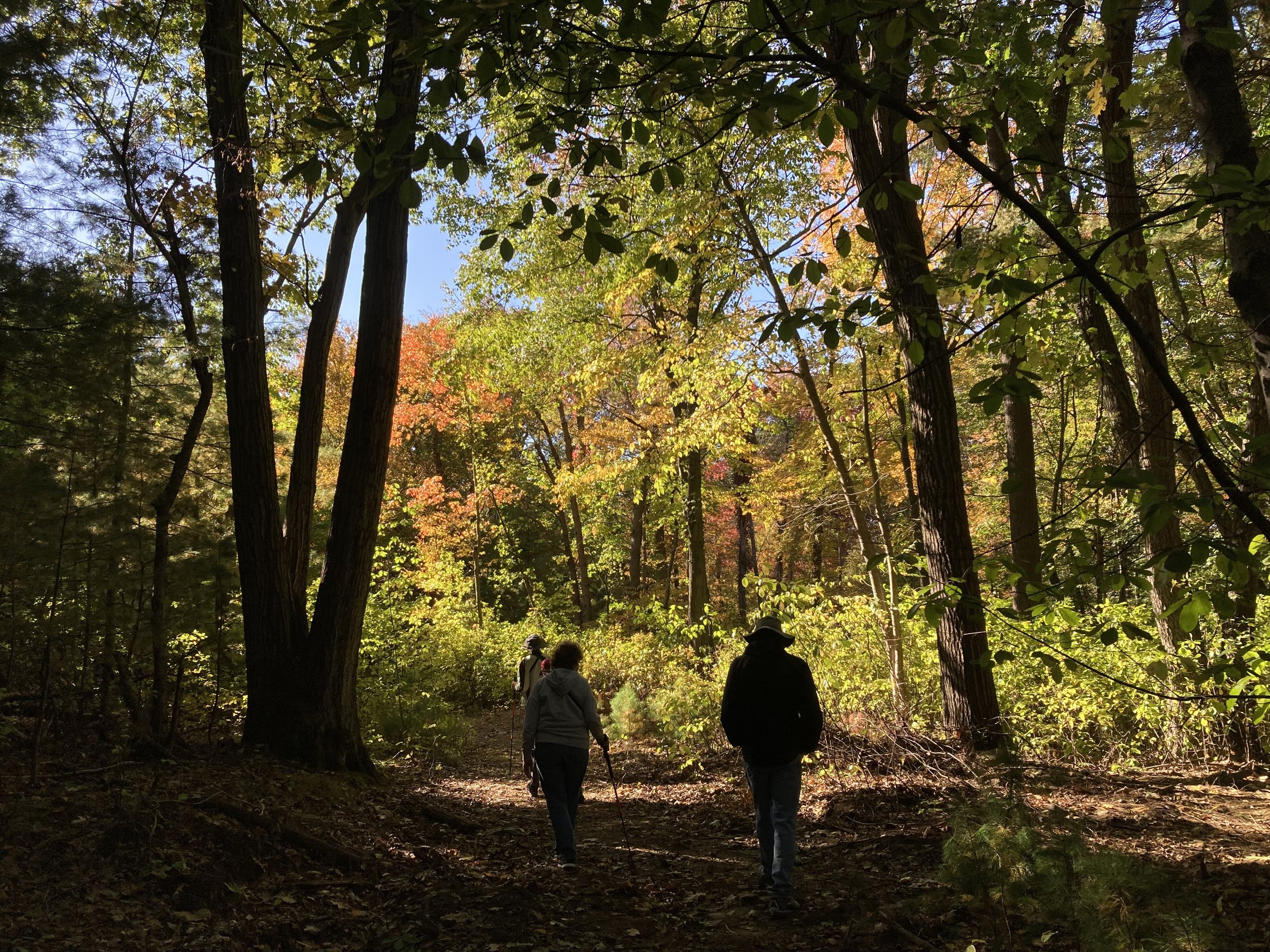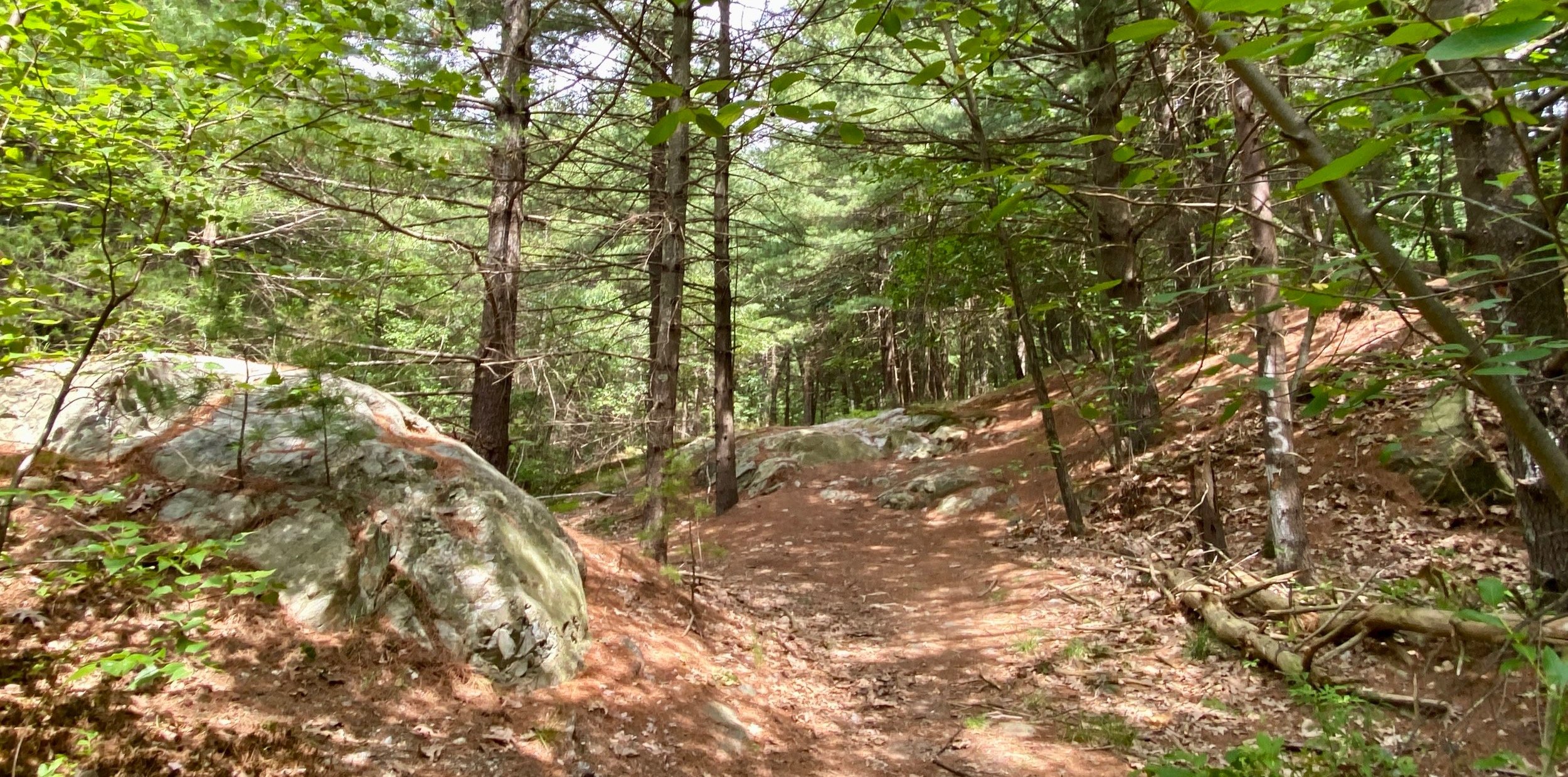
Help us stop the senseless destruction of this historic hilltop forest. Felling over 2000 trees on over 13 acres of forested hilltop and wetlands in an area significant to early Indigenous peoples to build the replacement Northeast Metro Tech vocational school goes against the recommendation of the pre-feasibility study- which recommended building in existing open space next to the current school. This sanctuary forest is home to rare and endangered species, including a previously undocumented population of Eastern Whip-poor-will, a nocturnal bird whose habitat is being lost to development.
The hilltop site requires blasting a 650 ft long, 30-35 ft high cliff into extremely brittle water-filled bedrock that will need fencing and hazard signs at the top of the cliff and guardrails at the base to keep rockfalls off the road by the school.
This section of rock outcrop forest, now filled with the songs of migrating and resident birds, will be a parking lot on the hilltop site after the site is logged, topsoil removed, blasted, crushed, and paved.
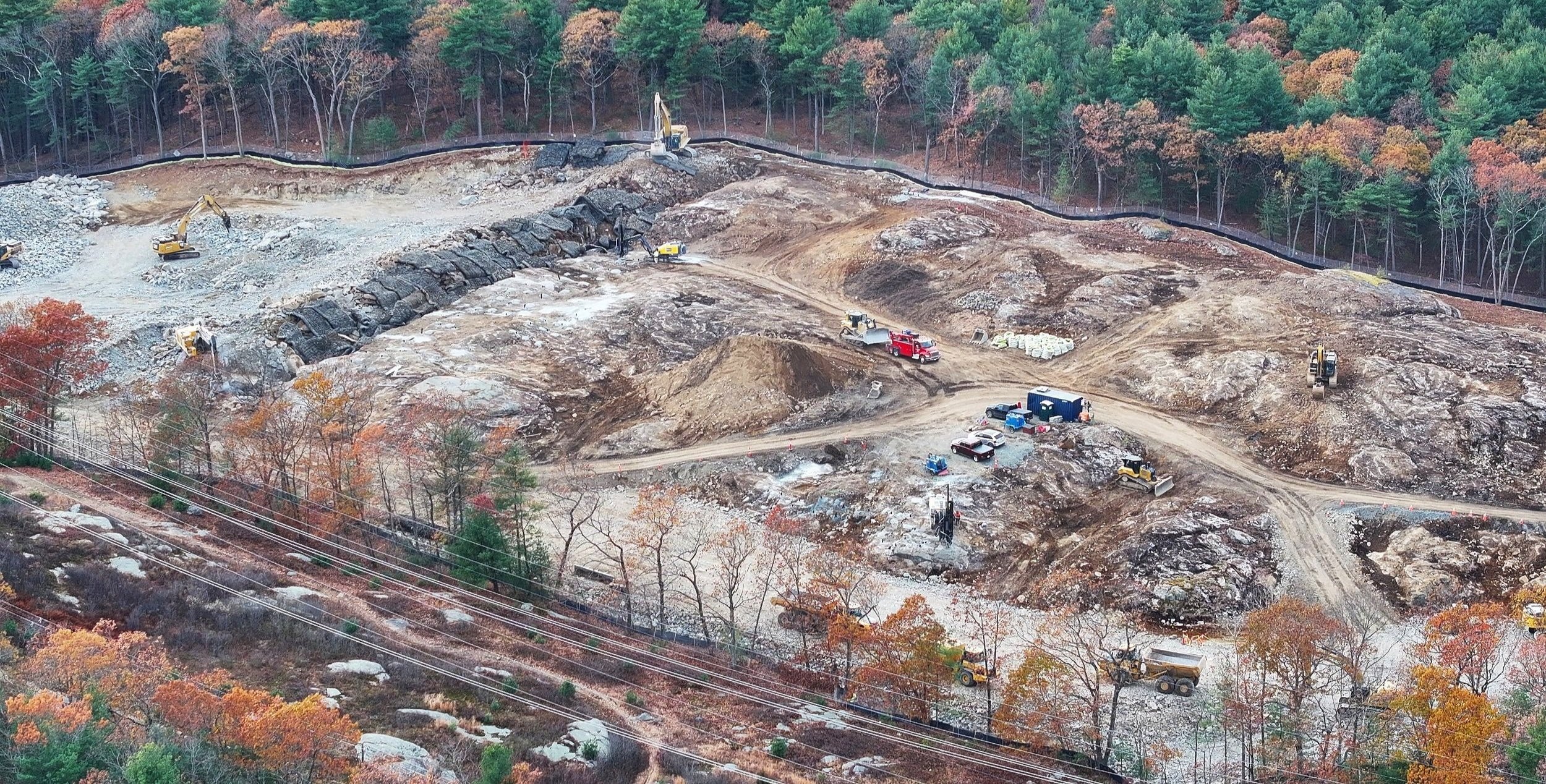
November 2023
Alternate building sites were available and could have considered.
Why this project which has destroyed an ecology that took million years to form?
This is too high a price to pay because this project will endanger the lives of our children and grandchildren for generations to come.
“For the millionth time, there were three viable building sites for the new vocational school. For reasons still not revealed, the NEMT School Building Committee, which includes Superintendent David DiBarri and Town Administrator Steve Maio, chose the most expensive destructive and unsafe site. But for this unwise and inexplicable decision, we could have benefitted from a brand new vocational school that would have had a safer campus, and have kept Wakefield’s only Core forest habitat intact. Who wouldn’t want the safest campus, and an intact forest to go along with our new vocational school?”
The inexplicable and unnecessary destruction and killing of rare species and unique biodiversity is presently ongoing at the last Forest Core ecosystem in Wakefield, MA.
The Wakefield Tragedy
The heart of the beautiful NEMT Forest has been turned into a barren wasteland, destroying over 2000 mature trees and understory of unique plants, and killing all the wildlife in the area in blatant disregard to the climate and biodiversity crises. Any survivors, including beetles, moss, and lichen, are currently being blasted away, with the overpressure and high temperatures burning and sterilizing nutrient-rich topsoil and subsoil layers, annihilating soil-dwelling organisms and the mycorrhizal network. They have already filled up and destroyed non-jurisdictional wetlands and are planning to build a road right through the jurisdictional wetlands. Wetlands are the lifeblood of ecosystems - they provide water for wildlife, serve as habitats, and are crucial for storing and cycling water essential for our survival, so it is important to protect and preserve them regardless of their jurisdictional status. All this was avoidable and preventable, as there are alternate sites to move this project to and allow the forest to heal and recover through natural progression.
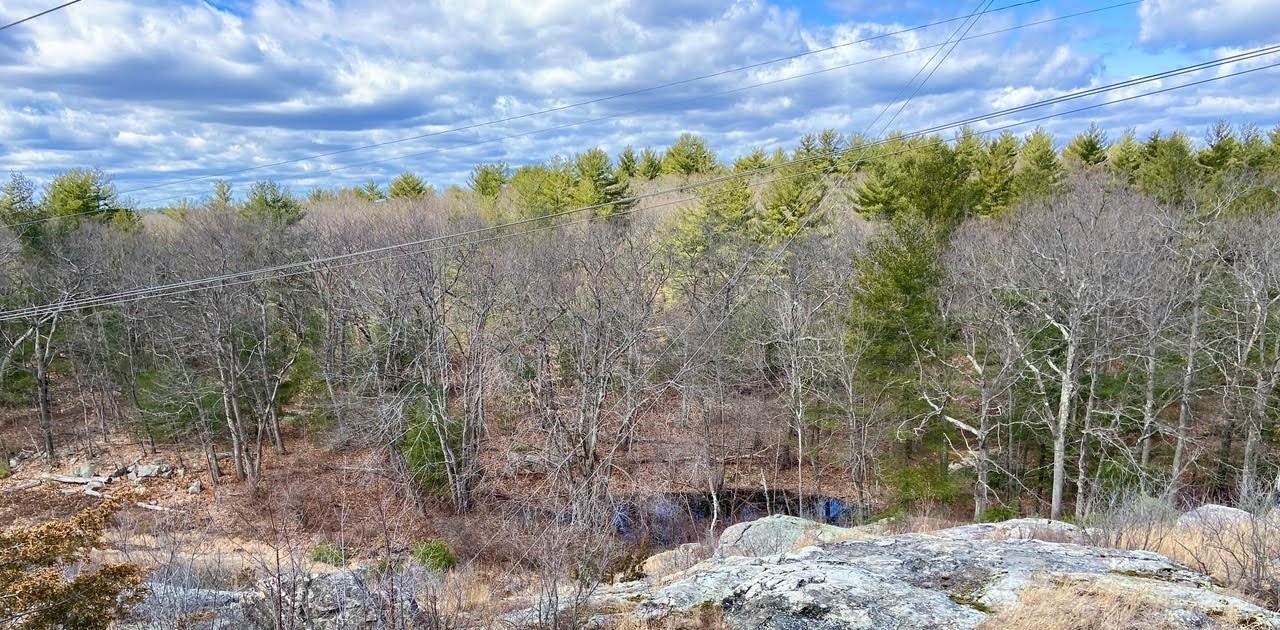
The senseless project has irreversibly destroyed tens of thousands of years of evolution what people have been admiring and benefitting from for decades. The NEMT SBC (Northeast Metro Tech School Building Committee) made the worst possible decision in siting the school in the hilltop forest. Everyone who has ever passed the guard gate, including Senator Jason Lewis, has looked at acres of fields that would have been a better and safer site for the new school. The NEMT forest was one of the rarest in the state, essentially unchanged since the glaciers melted. It never should have been at risk.
The brief outline below shows how we have reached this point. Without the tireless efforts of volunteer members and scientists in our group this work would not have been possible.
The Wakefield Conservation Commission (WCC) held public meetings for months, reviewed thousands of pages of construction plans and sought expert reviews on the wetland and stormwater impacts on the environment.
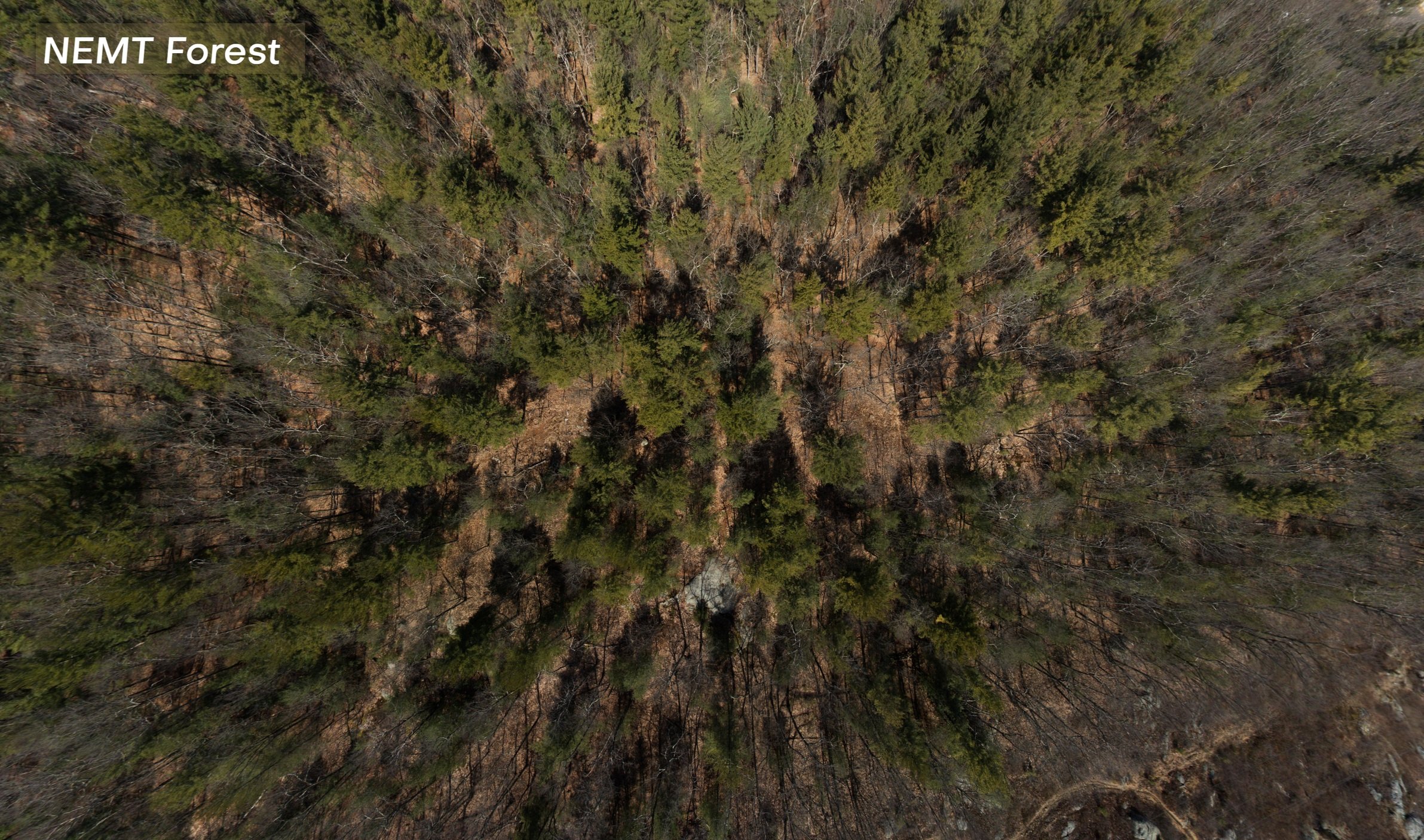
Save our Forest
change.org/saveforest
Save the Hentz’s Red-bellied Tiger Beetle
Do you remember the trails through the NEMT Forest, the trees of the Great Horned Owls, the drumming of the woodpeckers, the calls of the nuthatches, the songs of warblers, the call of the Eastern Whip-poor-will, the symphony of Spring Peepers, the trills of American Toads, the chirps of katydids and crickets, the salamanders under the lush mat of fallen leaves, the blooms of lady’s slippers, the pinesap, the colorful mushrooms emerging from the network of fungi and roots, and the many different species of moths and butterflies, and the state-listed Hentz’s Red-bellied Tiger Beetle? Do you remember the streams meandering past the moss-covered bedrock to the vernal pools? Do you remember the colors of Fall and the snow-clad pristine look of the forest?
All gone. Decimated. Perished.
“Global Climate Change is Real! For our species (and thousands of others) to survive, we all have to realize the road ahead is not straight... indeed, it will be a steep uphill climb that we all have to share in.”
“This is a crucial time in our state and throughout the country and world to do everything that we can to preserve the environment and not to destroy trees, wetlands, and important natural habitat. There is also a perfectly adequate alternative for the school site.”
The following was filmed at the Forest in October of 2022. All of the trees, plants and wildlife have been decimated and destroyed, along with the beloved memories of people who have enjoyed walks through this forest with their family and furry companions. The area is being blasted and will soon be paved to create a parking lot.
Background:
The NEMT Forest is a Forest Core habitat, as designated by BioMap, due to its ability to supported a rare and endangered species of plants, animals, and fungi (photographed below).
Forest Core
Represents the most intact forests of Massachusetts, least impacted by roads and development.
These forests provide unique forest interior habitat—representing just 14% of the state’s forests—important for animals and plants that depend on these remote sanctuaries.
But, a small group of unenlightened individuals, with myopic vision and lacking a comprehensive understanding of the significance of ecology, forest ecosystems, and carbon sequestration, have decimated over 15 acres at the heart of the forest, eliminating irreversibly everything from the canopy to several feet below the topsoil, which has taken thousands of years to form. They could have chosen the least destructive and less expensive option and built a better and safer school and life for the children, if they cared.
Despite the public outcry and our civic engagement, this destruction was further enabled by state agencies, who did not prioritize preserving this beloved natural treasure for both present and future generations, which would have been the common sense approach, especially during the heightened awareness of climate crises and the need to preserve mature forests and biodiversity.
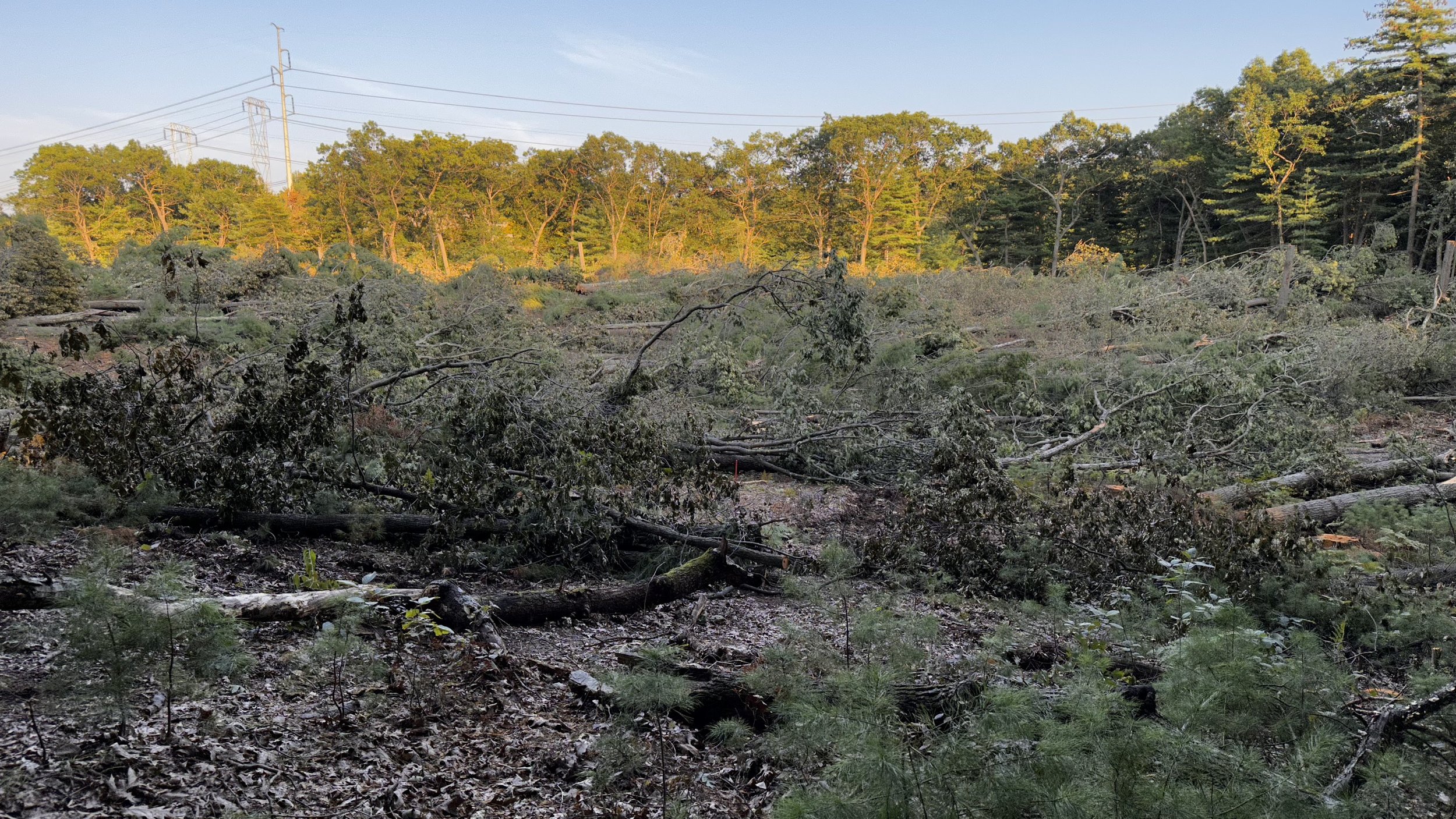
Originally part of Breakheart-Hill Forest, the twenty-eight acres of the Northeast Metro Tech (NEMT) forest includes upland forest with moss and lichen-covered volcanic rock outcrops, forested wetlands, springs, seeps, intermittent streams, and vernal pools supporting breeding spotted salamanders, wood frogs, spring peepers and American toads.
Soon, hundreds of oaks and pines could be clear-cut, roots grubbed out, soil removed, and the moss and lichen-covered outcrops blasted to reduce the height of the hillside by up to 35-ft in a massive blasting operation. Over several months, rock crushers on site will turn the blasted rock into fill.
Clearcutting and blasting this forest will needlessly destroy thousands of species and over 13 acres of rare and endangered species habitat. Over 8 acres of impervious surface will be created and a 1/2 mile of new road constructed through wetlands impacting vernal pools. Each one of those impacts should require environmental review.
In 2016 Newburyport architects Dore and Whittier in their 265-page pre-feasibility report rejected siting the new NEMT vocational school on the hilltop because of the huge blasting and site development costs and the lack of accessibility of the hilltop site to the main student parking lot and athletic fields that will remain at the base of the hill. Students are expected to use 800 to 1100 ft of ramped elevated boardwalks to scale the 60-70 ft change in elevation (equivalent to 6 stories) from the main student parking lot to the hilltop site. The size of the school will increase by 160% with an additional 350 students, plus teachers and staff for 3 new programs, with only 51 additional parking spaces.
The route from the student parking lot may eventually include an elevator and a $2M outbuilding to be built by students (blue, outlined in yellow, supplying locker rooms since the athletic fields are so far from the hilltop site). The elevator only traverses the first 15 ft of elevation. The latest plan uses 1100 ft of elevated boardwalk (yellow) and stopping traffic at two separate crosswalks (pink) will be necessary to reach the hilltop site from the main student parking lot 60-70 ft below. At Hemlock Rd, the new road is too steep for sidewalks and will be bordered with riprap and drainage swales. As of the NEMT School Building Committee meeting on 4-14-2022, the committee had yet to visit the hilltop site.
Pileated Woodpecker




